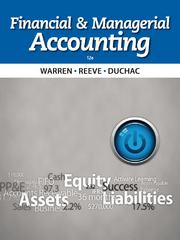Question
Simpler World Refining Page 1 In this simpler world there are only two types of crude oil and two types of refinery. Crude A is
Simpler World Refining Page 1 In this simpler world there are only two types of crude oil and two types of refinery. Crude "A" is light and sweet. Crude "B" is heavy and sour. In Year 1 the prices of the two crudes were about equal in dollars per barrel but by Year 4 the prices of each have increased rapidly and a gap has developed between the two as shown in the tables below: Crude Prices, $/bbl Year 1 Year 2 Year 3 Year 4 Crude A 24.30 29.60 39.60 50.30 Crude B 24.10 28.20 36.30 41.60 Crude Prices, $/tonne Year 1 Year 2 Year 3 Year 4 Crude A 185 225 301 382 Crude B 173 202 260 298 Demand for refined products is growing. From Year 1 to Year 3 total demand grew by 2.8% per year (from 3.41 billion tonnes to 3.61 billion tonnes). In Year 4, however, demand growth has been constrained, especially for diesel oil, due to tight supplies. Total demand grew about 2% in Year 4, to 3.68 billion tonnes. Market experts have estimated that demand for gasoline and diesel oil would have been 5 million tonnes and 23 million tonnes higher, respectively, in Year 4 if it weren't for the tight supply situation. Gasoline prices over the period increased substantially, from 35 $/bbl to 64 $/bbl. Diesel oil prices increased even more, from 30 $/bbl to 65 $/bbl. Crude oil supplies also increased over the period, by 2.5% per year (from 3.62 billion tonnes to 3.90 billion tonnes). Refinery capacity grew somewhat slower but is still equal to crude oil supply. New refining capacity has been built in oil producing regions. In this simpler world there are two types of refinery: Type A (simple "hydroskimming" refineries) and Type AB (complex high conversion refineries). In Year 1 the operators of the Type A refineries had a gross refining margin (not including operating cost) of 13 $/tonne running Crude A. In Year 4, in spite of higher prices, these refiners saw their margin drop to 5 $/tonne. Margins running Crude B were negative both years. For the Type AB refinery operators the situation was different. Gross margins in Year 1 had been 33 $/tonne running Crude A and 57 $/tonne running Crude B. In Year 4 their margins had increased to 58 $/tonne with Crude A and 164 $/tonne with Crude B. The tables on the following page provide information about crude supply, refining capacity, demand for gasoline and diesel oils, plus yields and Simpler World Refining Page 2 production data for each refinery/crude combination. (For purposes of this exercise we will ignore the situation for all the refinery products other than gasoline and diesel oils.) Your task is to 1) explain what has caused prices to increase so much even though there is still spare crude and refining capacity, and 2) explain what actions the refining industry could have taken prior to Year 4 that might have avoided the large price increases. Simpler World Refining Page 3 Simpler World Data Year 1 Year 4 Demand, millions of tonnes Total 3409 3680 Gasoline 1006 1082 Diesel oil 1210 1320 Crude supply, millions of tonnes Total 3620 3900 Crude A 2172 2340 Crude B 1448 1560 Refinery capacity, millions of tonnes Total 3680 3900 Simple 2400 2620 Complex 1280 1280 Optimum Yields For Each Refinery Type and Crude Refinery type Type A Type A Type AB Type AB Crude processed Crude A Crude B Crude A Crude B Gasoline .23 .11 .48 .42 Diesel oil .33 .23 .43 .43 Other .44 .66 .09 .15 Production Year 1 Year 4 Quantities in Mta Crude A Crude B Crude A Crude B Type A Refineries Crude Input 2003 0 2340 0 Gasoline Produced 464 0 542 0 Diesel Produced 656 0 766 0 Type AB Refineries Crude Input 128 1152 0 1280 Gasoline Produced 61 486 0 540 Diesel Produced 55 498 0 554
Step by Step Solution
There are 3 Steps involved in it
Step: 1

Get Instant Access to Expert-Tailored Solutions
See step-by-step solutions with expert insights and AI powered tools for academic success
Step: 2

Step: 3

Ace Your Homework with AI
Get the answers you need in no time with our AI-driven, step-by-step assistance
Get Started


